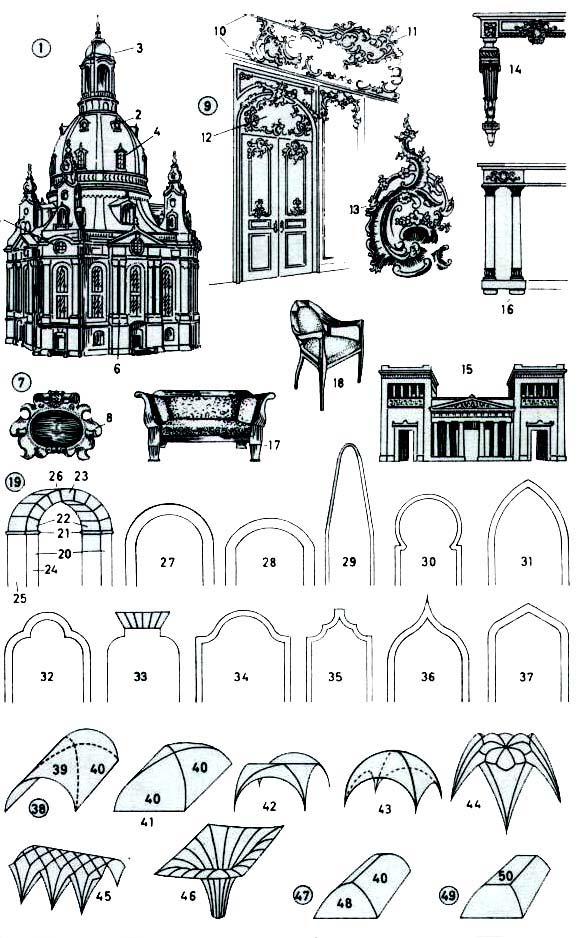
- •History through art
- •Развитие речевой способности в контексте диалога культур и цивилизаций
- •С.В. Сомова
- •Part II
- •Part III
- •Step 1: Understanding the Information Historical Background
- •Archaic Period
- •Classical Period
- •Hellenistic Period
- •Part II Words to be pronounced and learnt
- •Part III
- •Step 2: Spelling and Vocabulary
- •Ancient rome Historical Background
- •Step 1: Understanding the Information Historical Background (509 bc – ad 476)
- •Part I
- •Part II
- •Part III
- •Step 2: Spelling and Vocabulary
- •Step 4: Shaping Ideas and Facts in English
- •Step 5: Subject and Thesis
- •Part II
- •The middle ages
- •The MiDdLe aGeS
- •Historical Background
- •Part I
- •Part II
- •Part III
- •Step 1: Understanding the Information Historical Background 800 bc – 146 bc
- •Part I
- •Part II
- •Part III
- •Step 2: Spelling and Vocabulary
- •Step 3: Punctuation and Logic
- •Step 4: Shaping Ideas and Facts in English
- •Hildegard of bingen
- •Part III
- •The renaissance
- •The renaissance
- •Historical Background
- •Part I
- •Part II
- •Step 1: Understanding the Information Historical Background
- •Part I
- •Part II
- •Step 2: Spelling and Vocabulary
- •Step 3: Punctuation and Logic
- •Step 4: Shaping Ideas and Facts in English
- •Портрет высокого возрождения
- •Vincenzo perugia
- •Part IV
- •The baroque
- •The baroque
- •Historical Background
- •Part I
- •Part II
- •Step 1: Understanding the Information Historical Background
- •Part I
- •Part II
- •Part III
- •Step 2: Spelling and Vocabulary
- •Step 3: Punctuation and Logic
- •Step 4: Shaping Ideas and Facts in English
- •Giovanni lorenzo bernini
- •Part V
- •The enlightenment
- •The enlightenment
- •Historical Background
- •Part I
- •Step 1: Understanding the Information Historical Background
- •Part I
- •Versailles
- •Part II
- •Step 2: Spelling and Vocabulary
- •Step 3: Punctuation and Logic
- •Thomas gainsborough
- •Step 4: Shaping Ideas and Facts in English
- •Franz joseph haydn
- •George frideric handel
- •Part VI
- •Romanticism
- •Romanticism
- •Historical Background
- •Part I
- •Step 1: Understanding the Information Historical Background
- •Part I
- •Part II
- •Step 2: Spelling and Vocabulary
- •Step 3: Punctuation and Logic
- •John constable
- •Step 4: Shaping Ideas and Facts in English
- •Part VII the new times
- •Historical Background
- •Part I
- •Step 1: Understanding the Information Historical Background
- •Part I
- •Part II
- •Part III
- •Step 2: Spelling and Vocabulary
- •The twentieth century Historical Background
- •Part I
- •Step 1: Understanding the Information Historical Background
- •Part I
- •Part II
- •Step 2: Spelling and Vocabulary
- •Step 3: Punctuation and Logic
- •Step 4: Shaping Ideas and Facts in English
- •Step 5: Writing an Essay
- •Topics for Your Essays
- •Reference
- •1. Writing technique
- •1.1. How to Start to Write
- •1.2. How to Take Notes
- •1.3. Library Resources for Writing
- •1.4. Effective Sentences
- •1.5. Paragraphing
- •1.6. Paraphrasing
- •2. Written forms
- •2.1. Précis-writing
- •2.2. Synopsis-making
- •2.3. Composition and Essay-Writing
- •3. Elements of style. Expressive means of the english language
- •3.1. Metaphor
- •3.2. Metonymy
- •3.3. Simile.
- •Compare
- •3.4. Epithets
- •Compare
- •3.5. Hyperbole and understatement.
- •3.6. Oxymoron
- •3.6. Irony
- •4. Punctuation
- •4.4. The comma
- •4.5. The semi-colon
- •4.6. The colon
- •4.7. Quotation marks
- •4.8. Apostrophe
- •4.9. Hyphen
- •4.10. Marks of Parenthesis
- •4.11. A series of periods
- •4.12. Punctuating within the Compound Sentences
- •4.13. Punctuating within the Complex Sentence
- •5. Capitalization
- •6. Numbers spelled out or used in figures
- •Appendix 1
- •Appendix 2
- •Dictation 1 Early Years of Christianity
- •Dictation 4
- •Dictation 5 Socrates, Plato, and Aristotle
- •Dictation 6 The Roman Republic
- •Dictation 7 The Gladiators
- •Dictation 8 The Roman Empire
- •Dictation 9 Ancient Rome
- •Dictation 10
- •Keys to
- •Ancient Rome step 1: Understanding the Information
- •Step 2: Spelling and Vocabulary
- •Step 3: Punctuation and Logic
- •Step 4: Shaping Ideas and Facts in English
- •Part II. The Middle Ages step 1: Understanding the Information
- •Step 2: Spelling and Vocabulary
- •Step 3: Punctuation and Logic
- •Part III. The Renaissance
- •Step 2: Spelling and Vocabulary
- •Step 3: Punctuation and Logic
- •Vincenzo perugia
- •Part IV. The Baroque
- •Step 2: Spelling and Vocabulary
- •Step 3: Punctuation and Logic
- •Giovanni Lorenzo bernini
- •Part V. The Enlightenment
- •Step 3: Punctuation and Logic
- •Thomas gainsborough
- •Part VI. Romanticism
- •Step 2: Spelling and Vocabulary
- •Step 3: Punctuation and Logic
- •John constable
- •Part VII. The New Times
- •Step 2: Spelling and Vocabulary
- •The Twentieth Century
- •Step 2: Spelling and Vocabulary
- •Step 3: Punctuation and Logic
- •Resource List
- •Contents
- •Авторы-составители:
Step 5: Writing an Essay
Remember: In a composition the writer assembles facts and in an essay he expresses his own ideas, opinions and feelings. In an essay the task is to give an individual interpretation of facts. Thus the interpretation of a subject is different, depending on whether you are required to write a composition or an essay.
Exercise 1: Study very carefully the rules of writing an essay in Reference Section of this book.
Exercise 2: Choose the topic from the list below. Think over the plan and the beginning of your essay. Mind that there are many ways to begin an essay – general reflection, giving a definition and thus immediately introducing the subject, a quotation or a proverb – but whatever the form of the opening, it should make the reader hungry for more.
Exercise 3: Collect notes on the subject. Select the information you need and arrange material in the order of presentation according to your plan. Write down the main topics (topic sentences, key sentences) of each paragraph. Under each topic indicate the development.
Exercise 4: Make a rough draft of your essay.
Exercise 5: Think over expressive means of your essay. Correct the rough draft and make your final copy.
Topics for Your Essays
The historical background and its influence on the Renaissance.
“The Baroque art as the art of the nobility and the art of the common man”
Motion, violence, spectacle and sensuality of the Baroque art.
Art as an efficient means of promoting social or political ideas.
Unity, Indivisibility, Liberty, Equality and Fraternity – the political ideals of the Enlightenment.
The Romantic Age is an age of many conflicting reactions, a violent reaction to Reason.
Napoleon, the Romantic hero-brilliant and bold, breeding, temperamental.
“Changes” of the 20-th century as driving force of art.
What kind of men were the Romantics?
An artist and his time.
What makes a work of art immortal?
Trends in the 20-th century art.
PLATES
Plate
1
Plate 2

Plate 3

Plate 4

Plate 5

Plate 6

Reference
SECTION
1. Writing technique
1.1. How to Start to Write
The trouble with writing starts right at the beginning. There you sit, pencil in hand, a blank sheet of paper before you, and you don't know how to start. Maybe you have some ideas you want to express, some words and sentences you want to use, but what you have in mind just isn't ready to be put on paper. Don't think there is anything unusual the matter with you. The kind of trouble is common among people who haven't done much writing.
Well, how does one start to write? The most important thing is this: don't just start! Take your time. Slowly work out in your mind what you are going to say. In other words, make a plan. A piece of writing, like everything else you do, has to be planned. Think of a weekend trip, for instance; you can't just blindly go ahead on Saturday morning, not knowing what's going to happen. Instead, during the week, you make plans. You make up your mind when you want to start and when you want to be back; you decide where you want to spend Saturday night and what you want to do on Sunday morning; you get yourself a map and find out which route to take; you spot a place to eat lunch and another to eat dinner; and you work out a different route to go back on Sunday afternoon and evening. When you are through, you have a plan: you know where to start, where to go first, second, and third, and where to end.
Writing works the same way. The thing to do is to plan ahead. And since you are planning for something that is made of words, make sure your plan is in words. Write your plan out. Put down on paper the start, the main in-between, stops, and the end. Only in this way can you be quite sure that you have a plan.
Then, with your sketch in hand, you can go ahead and work out your piece of writing, step by step and without any danger of losing your way. That's the way all speakers, lecturers, and writers work. So before you start to write:
1. Take your time and think about what you are going to say.
2. Put your main ideas into words.
3. Work out what order your ideas should be in.
4. Put this plan on paper.
5. Never start to write without a plan.
